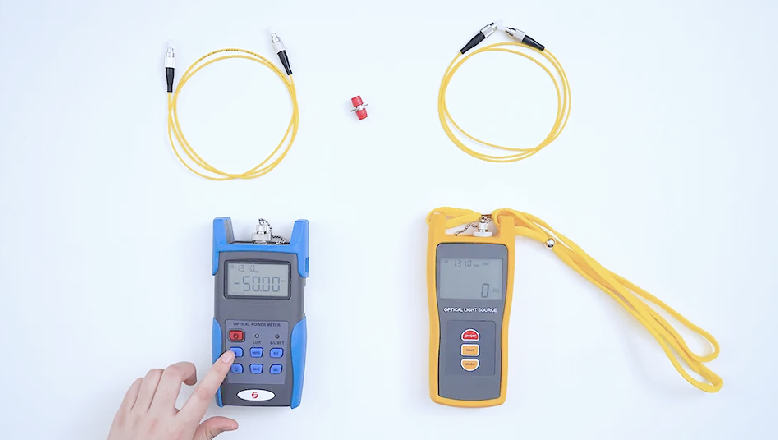Important Attributes to Search For in Optical Fibre Screening Tools
When examining optical fibre screening equipment, a number of necessary attributes require careful factor to consider to guarantee optimal performance and dependability. Compatibility with existing industry standards enhances performance, while sophisticated measurement abilities, including TDR and OTDR testing, offer vital insights into network stability. Comprehending these attributes will certainly lose light on exactly how to pick the right equipment for your certain needs.
Precision and Precision
Accuracy and accuracy are important criteria in the analysis of optical fiber testing equipment. These 2 features make certain that measurements show the real performance of fiber optic systems, which is important for effective network installment, upkeep, and troubleshooting. Accuracy refers to the nearness of a determined worth to the actual value, while accuracy signifies the repeatability of measurements under the same problems.
When picking optical fibre testing equipment, it is essential to take into consideration instruments that provide high accuracy and precision to minimize mistakes in information analysis. Gadgets such as optical time-domain reflectometers (OTDRs) and power meters must have calibration devices to ensure constant efficiency gradually. Additionally, the requirements provided by makers need to information the tools's dimension uncertainty, which straight affects the integrity of examination results.
Additionally, the performance of optical fiber screening tools can be influenced by ecological factors, such as temperature and moisture. Choosing equipment designed to minimize these variables will improve measurement integrity. Finally, buying optical fiber screening tools with robust accuracy and precision attributes is essential for maintaining optimum network performance and ensuring the honesty of fiber optic interactions.

User-Friendly Interface
The effectiveness of optical fibre testing tools is not solely established by its accuracy and precision; an user-friendly interface plays a considerable function in boosting operational effectiveness. A well-designed interface simplifies the communication in between the specialist and the devices, permitting an extra user-friendly understanding of complex features.
Trick functions of an user-friendly user interface consist of clear navigating menus, rational layouts, and quickly accessible controls. These aspects make it possible for specialists to execute examinations quickly without considerable training, decreasing the likelihood of individual mistake - ofda. Aesthetic indications such as progress bars, signals, and graphical depictions of information can significantly boost the user experience by offering immediate comments on the testing procedure.
In addition, personalized settings can additionally simplify operations by allowing individuals to readjust specifications according to certain testing demands. This flexibility not only saves time yet also guarantees that the devices meets diverse application requirements.
Including help attributes, such as tooltips and thorough handbooks, right into the interface can better equip users, advertising self-sufficiency and self-confidence in running the tools. Inevitably, an user-friendly user interface is crucial for maximizing the capacity of optical fiber screening tools, bring about extra effective and reliable testing end results.
Portability and Toughness
Portability and longevity are essential attributes of optical fibre testing devices, ensuring that it can hold up against the rigors of various settings while remaining easy to transportation. Professionals frequently operate in diverse settings, from telecoms centers to remote installations, making it necessary that testing devices are lightweight and small (ofda). Tools created with mobility in mind generally includes ergonomic takes care of and instances that promote simple and easy movement, hence enhancing functional effectiveness on-site
Longevity is equally important, as optical fiber screening equipment is usually revealed to extreme conditions, consisting of temperature changes, moisture, and physical impacts. Instruments built with tough products such as strengthened plastics or metal housings are better suited for these settings, lessening the danger of damages throughout usage and transportation. Additionally, equipment with water and dust resistance ratings, such as IP ratings, makes certain reputable efficiency in challenging conditions.
Compatibility With Specifications
Ensuring compatibility with market requirements is important for optical fibre testing devices, as it straight affects the dependability and legitimacy of examination outcomes. Optical fiber networks undergo rigorous performance criteria established by different companies, including the Telecommunications Industry Organization (TIA) and the International Electrotechnical Payment (IEC) Testing tools needs to abide by these standards to ensure that measurements correspond and comparable throughout different systems and settings.
When choosing optical fibre testing devices, customers should confirm that the device satisfies relevant requirements relevant to their certain application, such as those pertaining to attenuation, bandwidth, and crosstalk. Equipment that is compliant with established standards not just helps in attaining precise outcomes however also assists in interoperability among devices from various manufacturers.
Additionally, click to investigate compatibility with standards makes certain that the devices can be made use of informative post in governing compliance circumstances, which is crucial for jobs in fields such as telecommunications, aerospace, and army applications. Consequently, buying optical fiber testing tools that lines up with present industry standards is a basic element of maintaining quality control and attaining optimum network efficiency.
Advanced Dimension Abilities
Advanced dimension abilities are a defining function of modern-day optical fibre testing devices, enabling comprehensive evaluation of network efficiency. These abilities ensure that technicians can examine essential parameters such as signal loss, diffusion, and transmission capacity, which are vital for preserving ideal interaction performance.
One trick facet is the capability to perform time-domain reflectometry (TDR) and optical time-domain reflectometry (OTDR) tests. These methods enable customers to determine faults, determine the size of fibres, and establish the area of defects with amazing precision - ofda. Sophisticated tools usually includes the ability to measure optical power degrees, assisting to assess the total health of the network and make certain compliance with the required specifications.
Furthermore, some testing devices use sophisticated algorithms for real-time analysis, allowing quicker diagnosis and troubleshooting. In conclusion, spending in optical fiber screening equipment with advanced measurement capabilities is important for guaranteeing network integrity and efficiency in today's demanding telecommunications landscape.
Conclusion
